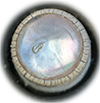Bags and Cases
One of the few needed accessories is a gig bag for your instrument. Such bags are much more lighter than the original cases and are sufficient for most opportunities. They can be used as an ordinary bag or as a knapsack as the Finish model.




